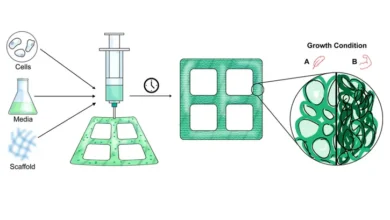A DIY guide to debunking “greenhouse gas” claims…The science of cutting corners

By Fred F. Mueller
Do you feel helpless trying to gauge the veracity of the “climate dooms” claims that we are constantly under attack?
For ordinary citizens who do not have at least a Ph. by atmospheric physics or comparable climate sciences, it seems nearly impossible to distinguish right from wrong when evaluating such claims. Do so-called greenhouse gases really reflect infrared energy back to earth in quantities that affect earth’s temperature?
Don’t give up trying to understand the basics involved: there are pretty simple ways to get the hang of this. Even without a scientific background, most people have at least a good common sense. And that’s all it takes to understand how powerful and chaotic the energy flows are moving up and down, back and forth between the earth’s surface and the sky.
Figure 1. The setting sun illuminates a rather thin veil of clouds from below – thus transferring energy into the space between the earth’s surface and the cloud cover.
Part 1 – some basics
First, let’s clarify where the heat that allows us to live quite comfortably in our environment comes from and where it goes. Despite the huge energy content in our planet’s molten core, most of our energy comes from the sun, the sun sending us energy mainly by using three forms of electromagnetic radiation: : visible light, ultraviolet and infrared rays.
At the top of the atmosphere, each square meter facing the sun thus receives a fairly steady flow of energy from 1361 to 1362 W/m2. Although not a real constant, this value is often referred to as . solar constant.
The alleged greenhouse effect
The concept of the “greenhouse effect” in our atmosphere has been used and misused so often, resulting in a startling mess of misconceptions not only among the general public. but even in the scientific world. A striking example of apparent distortion can be seen in the opening image of the Wikipedia chapter on the subject, Figure 2.
Figure 2. Opening image of the Wikipedia chapter on the “greenhouse effect” (Author: Efbrazil 2)CC 4.0)
This graphic highlights the extent to which Wikipedia creates the impression of falling prey to climate action. The complex reality of energy transfer and transformation on our planet involves soil, water, gases, clouds, aerosols, heat storage, conduction and convection, chemical reactions, and phase transformations. , as well as a host of additional factors that are simply swept under the rug, attributing all of their combined effects to obnoxious “greenhouse gases”.
This Wikipedia chapter is a sad example of the demise of a supposedly scientific encyclopedia that actually propagates rather crude ideology under the guise of educating the public. The related chapter covers more than 7,000 words and attempts to underline its claim to be “scientific” with a list of 80 citations that includes articles on atmospheric conditions on distant cosmic bodies such as Titan and Stars. Needle. But this does not excuse the use of such a seriously misleading image as the opening image for the summary. Such tricks are often used in tabloids or yellow magazines. Wikipedia sees itself as an encyclopedia for not only scientists but also the layperson and the general public, so extra care should be taken not to disseminate content that could be misunderstood. by people who lack scientific knowledge.
Figure 3. This more detailed representation of the energy flows on earth developed by NASA is still misleading for some decisive events (NASA’s photo 3), public domain) Note: This image and the corresponding link were revoked upon completion of the article. In the next section, the replacement graphic and its modifications will be dealt with in detail. However, this image and its errors have been displayed for a long time, so a proper discussion is needed.
Although the more detailed NASA-built Figure 3 gives a better impression of the various factors that affect the flow of energy between the earth’s surface and space, it is still subtly misleading. making it unsuitable for conveying proper understanding of important facts. Consider the main contradictions.
The mean is intended to mask natural variations
One of the favorite tricks of climate prophets of doom is to suggest that all the major factors influencing our climate are more or less constant, with the sole exception of “greenhouse gases”. “. They intend to exploit the fact that CO2-The level of the atmosphere is increasing while at least for about 150 years meteorologists have also noticed moderate increases in the temperatures they monitor on their stations. Although both trends are far from matching, the coincidence between these trends has been claimed as evidence for causality, although no clear mechanism or Any quantitative inference can be established. Although there are many striking differences, for example, for the natural cycles of CO2 or CO . absorption and sequestration2 In our oceans, the increase in temperature is felt almost exclusively by CO2.
Steam abuse
Another direction is the claim that water vapor simply reinforces the leading role of CO2. This can be considered a true masterpiece of torsion realism because water vapor is not only much more efficient at absorbing (and reproducing) infrared radiation (see Figure 4.), but also exceeding too much CO2 in the atmosphere by factors from 25 (= mean concentration value at sea level) to 100!
Figure 4. Comparison of the IR spectrum of a 14 °C surface with the overlapping absorption bands of CO2 (brown) and water vapor (bluish) show superior absorption of water vapor for IR emissions by soil or water at 14 °C – (which is the “average” temperature at the earth’s surface) . Please note the different scales of the x-axis: linear for spectral irradiance, logarithmic for absorption. (Graphics: SpectrumCalc 4) (above), NASARobert Rohde 5) Public domain (below)).
Despite these contradictions, the climate science community has largely adopted this approach. This may be due to the fact that the amount of water vapor in the atmosphere is subject to local and temporal variations between almost zero – for example at high altitudes and very low temperatures – and sometimes up to 4% at sea level.
cutting angle
Also, especially when turning into clouds, water vapor tends to condense or freeze out of the atmosphere in ways that have hitherto resisted any practical attempt to describe them mathematically. Attempts to establish realistic three-dimensional water vapor distribution models over a given location at a given time and to calculate the resulting effects on infrared radiation absorption and recurrence, due to it is still a much more difficult task than using a single value for all and all conditions, as can conveniently be done by attributing the entire “greenhouse effect” to only CO2. And voilà, complex research workloads can be simply ignored. This approach also dramatically reduces the scale of spending in data collection, manpower, computer time – and in waiting time before receiving academic awards. After all, the beacon for the whole of climate science, the IPCC, is doing just that, for example by simply removing water vapor from its “greenhouse gas” account, see Figure 5. .
Photo.5. Contributions to climate change are observed from 12 different drivers, as taken from the IPCC’s Policy Makers Summary of the sixth assessment report, adjusted from figure SPM.2c (Graphics: Erik Fisk, CC 4.0 6))
The multitude of advantages of cutting such (scientific) angles could be one of the main drivers of the blameworthy trend towards “single number fallacy” is interpreted by Kip Hansen 7) as “the belief that complex, complex, and even chaotic subjects and their data can be reduced to a single substantial and truthful number.”
Unfortunately for us, that’s exactly what official climate science is doing. Titled “A Number to Track Human Impact on Climate”, NOAA scientists have published the first number AGGI 8) (aggregate greenhouse gas index) in 2006 as “a way to help policymakers, educators and the public understand the cumulative impact of greenhouse gases on climate over time”.
Micro-dynamics of “greenhouse gases”
When trying to assess the true impact of “greenhouse gases” on the earth’s energy balance, the first step is to assess the dynamics they are thought to have on the inputs and outputs of energy flows. quantity. The corresponding parameters can be found in a table in Wikipedia chapter on greenhouse gasesto be 9). They reveal that from the perspective of leading climate scientists, only four gases have had an impact on the energy exchange budget between incoming and outgoing radiant energy since the beginning of the “transformation” man-made climate” in 1750. That is:
Carbon dioxide with +2.05 W/m2
Methane with + 0.49 W/m2
Nitrogen oxide with + 0.17 W/m2
Tropospheric ozone + 0.4 W/m2
===========
Total GHG contribution +3.11 W/m2
This number is extremely small when compared with the enormous local and temporal variation of the energy flows in our planet’s ocean/atmosphere/land system over short periods of time and only accounts for a low percentage in a single figure in daily variations. This will be covered in more detail in the next chapter.
Huge range of special greenhouse effects
In addition, it is interesting to see that the IPCC offers a wide range of greenhouse gases (TCR, Transient Climate Response or “climate sensitivity” ten)) of CO2, is estimated to be in the “probable” range of between 1.5 and 4.5°C. Number representing the presumed increase in earth’s average temperature in °C for each doubling of CO22 level of the atmosphere. Given this extremely wide ±50% range, one might be surprised that the authors of IPCC, NOAA and Wikipedia give calculated values of temperature rise for greenhouse gases in up to three digits” mean”. This may also be because the sense of certainty about climate-related metrics has been instilled by the general public by the “one number fits all” mentality prevalent in the current climate science community. our.
Presenter
- https://en.wikipedia.org/wiki/Solar_constant
- https://en.wikipedia.org/wiki/Greenhouse_effect
- http://science-edu.larc.nasa.gov/energy_budget/pdf/Energy_Budget_Litho_10year.pdf (Note: This link appears to have been disabled recently.)
- https://www.spectralcalc.com/blackbody_calculator/blackbody.php
- File:CO2 H2O absorbing atmospheric gases unique energy model energy wavelength transparent to others.png – Wikimedia Commons
- https://commons.wikimedia.org/wiki/File:Physical_Drivers_of_climate_change.svg
- https://wattsupwiththat.com/2023/01/03/unknown-uncertain-or-both/
- https://research.noaa.gov/article/ArtMID/587/ArticleID/2877/Greenhouse-gas-pollution-trapped-49-more-heat-in-2021-than-in-1990-NOAA-finds
- https://en.wikipedia.org/wiki/Greenhouse_gas
- https://www.metoffice.gov.uk/research/climate/understanding-climate/climate-sensitivevity-explained



